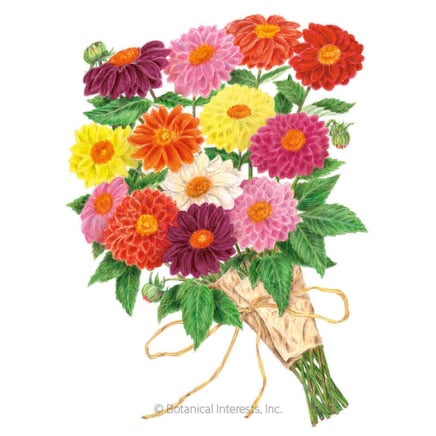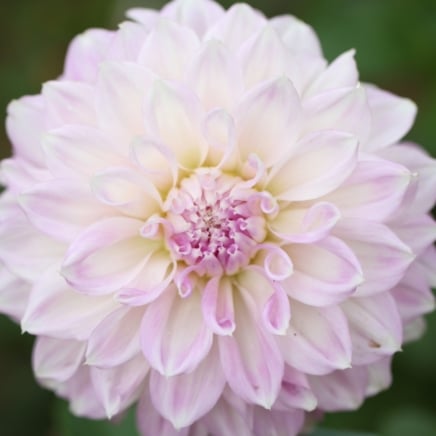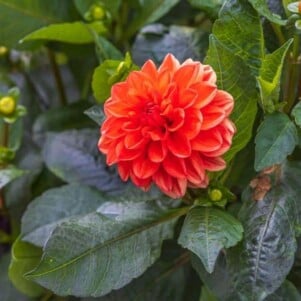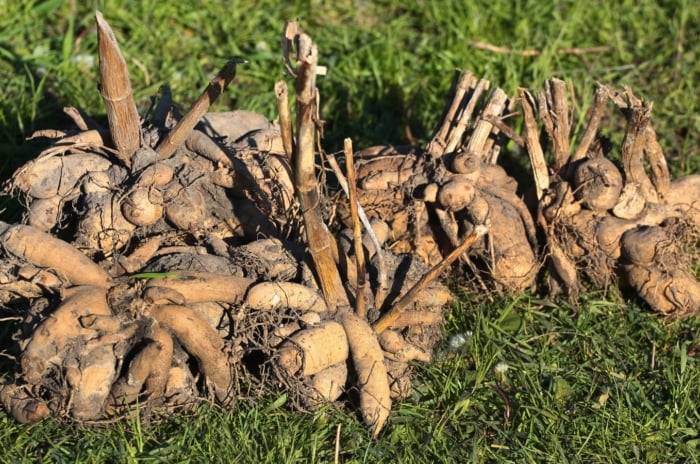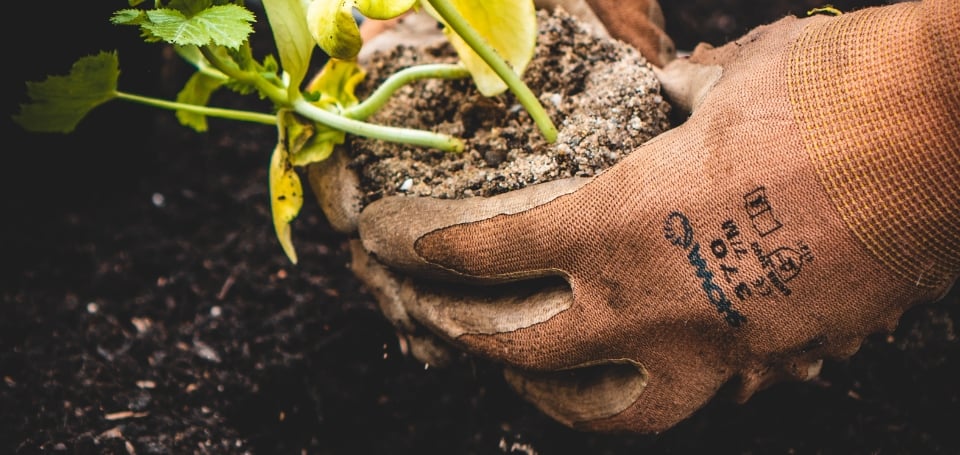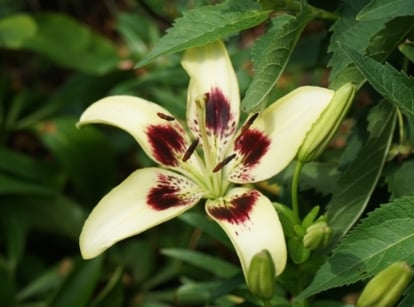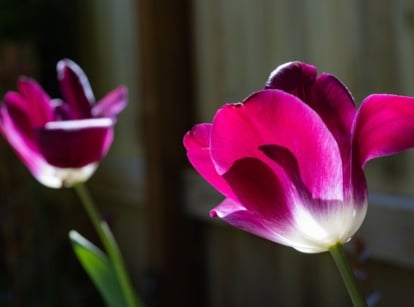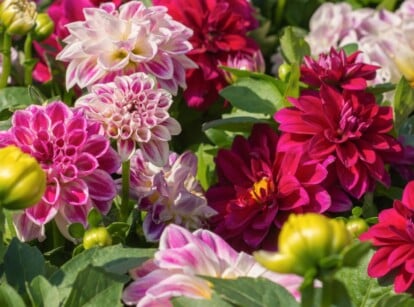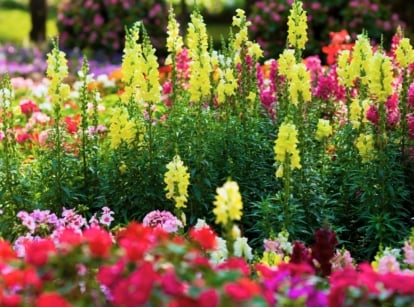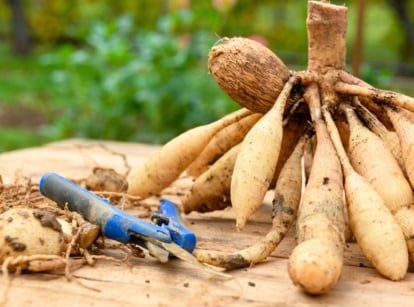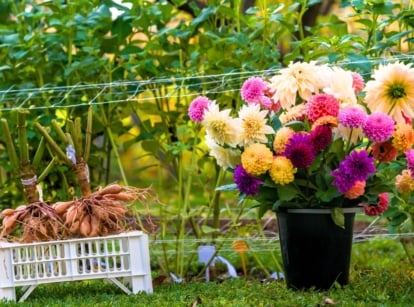When to Plant Dahlias Outside: Tips for Your Zone
Dahlias bring exquisite blooms over a long flowering season, which makes their care worthwhile. With spring as the prime time for planting and dividing, dahlias are top-of-mind for hooked gardeners. But don’t rush the process, as the tubers love warmth. Garden expert Katherine Rowe reviews the best time to plant dahlias outside for your growing zone.

Contents
Beloved dahlias bring perfect blooms in a variety of forms and sizes, from miniature pompons to large dinner plates. The American Dahlia Society classifies them into groups like decorative, ball, orchid, and cactus, all based on intricate petal symmetry. Over forty recognized species exist, each with outstanding varieties and architectural blooms.
Dahlias love warmth and basking in the sun. Their tubers are sensitive to frost, so they need warm soil to develop. They also have a long time to maturity, flowering in about 100 days.
Knowing when to plant dahlias is crucial for success. For gardeners in warm growing seasons, planting post-frost yields a lovely late-season bloom in peak flowering. In colder climates with short growing seasons, starting them indoors gives a headstart for flowering enjoyment. This guide includes more details for your specific growing conditions.
Dahlia Overview

Dahlias sprout roots and shoots from tubers, their fleshy, starchy root structures with bud eyes. After winter dormancy, they quickly take off in spring’s warming conditions. They have a long time to flowering, at about 100 days.
Dahlias perennialize in zones 7-10, though they wither in the long, hot summers of the lower South. Tubers also don’t withstand frigid winters. Where not hardy, dahlias perform well as annuals, growing quickly in a single season. To ensure the preservation of your favorites, lift and store their tubers over the winter.
A robust root system is essential for thriving dahlias and is achievable through proper siting, soil preparation, and pruning. Tall varieties benefit from staking but won’t withstand strong, drying winds. Protect those with tall stems from breezy zones. Dahlias are toxic to dogs and cats, so keep them out of the range of curious pets.
When To Plant Outside

When spring soil and air temperatures are warm, you will know that it’s time to plant dahlias. Don’t rush the warmth—patience pays off in blooming rewards with the right timing. Dahlia tubers and seedlings are frost-sensitive and tender against cold conditions. Wait to transplant them until a few weeks after the final frost, when soil temperatures are consistently above 60°F (16°C). The American Dahlia Society recommends treating them as you would a tomato or other heat-loving crop.
There are two popular options for starting tubers:
- Plant them in the ground after the final frost and as the soil warms, usually in April or May for most climates.
- Start them in pots indoors for early flowering after transplanting (beneficial for cold climates with shorter growing seasons).
Much of the U.S. can plant dahlias through mid-June. The later plantings stagger the bloom time and yield beautiful early fall flowers. Cool nighttime temperatures and warm days are best for dahlias to grow and flower. On average, 55-60°F (13-16°C) night-time temperatures and 70-80°F (21-27°C) daytime are ideal.
Zone Tips
For most climates, planting in April to May is prime and yields mid-to-late summer blooms. Warm zones can plant earlier and, with an extended growing season, as late as June to enjoy fall flowers. In zones lower than zone 7, plant dahlias indoors in containers to allow plenty of bloom time once outside.
Zones 7-10

In zones 7-10, dahlias are hardy, and tubers overwinter outside. As early as March, warm zones begin dahlia planting, extending into June. April to May plantings show a peak bloom in September and October.
In zones 7 and higher (with the exception of frost-free zone 10), the last anticipated frost passes in mid-to-late March.
Zones 6 and Colder

With dahlias’ long maturation rate, we want plenty of time to enjoy their blooms before lifting them to overwinter. In cold climates outside their hardiness zones, the shorter growing season before frost means less time to enjoy full bloom. To relish the flowers fully after the hard work of tending and storing, start them early before moving them outside. They’ll love a greenhouse start in late winter and early spring, but a cool indoor space works just as well.
In zones 5-6, you’re looking at a final frost in early to mid-April. Zones 4 and colder, May is your month. While frost dates are a guide, specifics vary by location. A late spring frost can be detrimental to newly planted tubers. Wait to transplant until soil temperatures are consistently above 60°F (16°C), aiming for late April to early May in zone 6 and mid-May to early June in zone 5 and lower.
How to Start Indoors
Get a jumpstart on growth by starting tubers indoors early. Plant them out six to eight weeks later. You can also sow seeds for an economical way to grow dahlias in numbers. Seeds take longer to develop but form small tubers over the growing season. Because they’re open-pollinated, hybrids from seed won’t be true to type.
Tubers in Pots

In zones 6 and lower, start potting in mid-to-late April. Use gallon-sized containers with good drainage for planting. Fill the containers about halfway and place the tubers with the eyes facing upward. Cover them with several inches of soil and wait one or two days to water them. Keep pots in a bright location, watering sparingly as roots and shoots develop, before moving them outside.
Place the containers in a sunny spot with cool temperatures (around 55°F or 13°C), and keep the soil evenly moist but not wet. As the weather warms and after transplanting, expect to see the cheery blooms begin in July and last until frost.
From Seed

Start seeds indoors four to eight weeks before spring’s anticipated last frost. For gardeners with a long growing season, direct sow them post-frost for later blooms. Starting them indoors gives seedlings a head start on development, with strong roots and leafy stems for faster growth and blooming after transplanting.
To sow the seeds indoors, fill a tray with potting mix. Scatter the seeds on top of the media and lightly cover with soil. Moisten thoroughly after sowing and keep the media moist throughout the germination process (the soil should not be wet or soggy).
Place the trays in a warm, bright spot. Temperatures between 65-70°F (18-21°C), or a heat mat at that setting, promote sprouting. Dahlias tend to germinate well in slightly cooler conditions than some other summer bloomers. Expect to see sprouts in 7 to 10 days or within two weeks as they germinate intermittently.
How to Plant Outside

A key to dahlia growth is site preparation. They perform best in full sun (six or more hours) in loose, rich soil. To prepare the soil, dig a hole one foot wide and one to two feet deep for each tuber. Amend the soil with organic matter and backfill the hole. Plant the tubers three to four inches deep—eye side up—with a generous spacing of one to three feet apart.
Soil is a top priority. It should be loose and crumbly, with good aeration and moisture retention. Dahlias prefer fertile, well-drained soils. A slight acidity with a pH between 6.5 and 7.0 is prime. If the soil is too acidic, add a cup of lime to neutralize it. At planting, amend the soil with compost, leaf mold, aged manure, or pine bark. Mix these with ⅔ native soil. Keep in mind that manure and pine bark can increase acidity.
At planting, if the soil is naturally moist from spring rains, don’t water the tuber until new growth emerges. Too much water causes them to rot. If the soil is dry, keep it moist through sprouting.
Frost Protection

In the event of a cold snap or projected late-season frost, extra protection insulates newly planted dahlias from cold damage. For short-term chilly temperatures, mound the crown with mulch until the cool spell ends. Pull back the temporary layer when temperatures warm so the sun can reach the developing shoots and tubers.
If frost is in the forecast, use frost cloth or another protective fabric over the seedlings. Homemade cloches do the trick to cover individual plants. Use a milk jug or plastic bottle with the bottom removed, slipping it over the tender crowns until conditions warm.
Maintenance

After soil prepping and tuber planting, a few simple tasks help dahlias grow with health and vigor. Mulching helps regulate temperatures in spring and summer by keeping roots cool and retaining moisture. Add more mulch before cold winters for overwintering protection.
Use stakes for tall varieties, installing them at planting time or before stems reach more than one foot tall. Tie stems to stakes with soft, natural twine and continue tying them off as they grow.
Decide whether you’ll leave the tubers in the ground or dig them for winter storage. Even in warm zones where they overwinter outside, some gardeners choose to bring them inside rather than risk a cold winter.
Digging

Dig up the tubers and store them together in a cool space for the next growing season. Wait until the first few hard frosts in fall to dig dahlia tubers in cold climates. Stems and leaves blacken and die back, and tubers harden off. Wait until the frosts to prevent storing green tubers, which shrivel quickly in winter storage.
When digging tubers, take care not to damage long roots or the tuber itself. When lifted, they break easily at the eye. Leave a few inches of the stalk intact. Brush off dirt, rinse the tuber, and trim back roots. Allow it to dry overnight in a cool, dark place (40-50°F or 4-10°C) before storage.
Store tubers in boxes or crates of damp sand, vermiculite, newspaper, or wood shavings. The medium should be moist but not wet. Check them periodically to make sure the bulbs don’t dry out too much. Dampen the media to help restore moisture.

